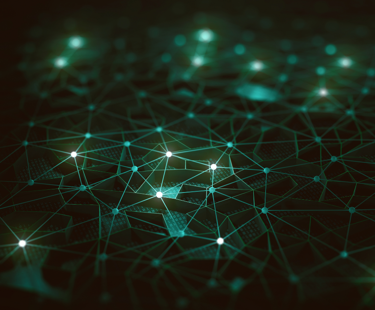Many will be eagerly awaiting the UK Supreme Court hearing timetabled for 21-22 July 2025 in the matter of Emotional Perception AI Limited v Comptroller General of Patents. The UK’s highest court will determine whether Artificial Neural Networks (ANNs) are to be deemed computer programs as such. The decision concerns UK patent application GB2583455 and will be far reaching in the UK but potentially may also have significant ramifications at the European Patent Office (EPO) where oral proceedings in respect of a corresponding patent application (EP3931721) have been postponed awaiting the UK Supreme Court decision.
At the heart of the matter is a Mashtraxx originated concept that assesses similarity in data points in one data file and maintains a semantic relationship so that a recommendation can be made on similarity based on properties in another file. During training, weightings of neurons are adapted to map pairwise commonality in a semantic space and a property space with the approach being independent of any arbitrary point of origin.
In June 2022, the UK Intellectual Property Office (UKIPO) indicated it considered the claimed invention and by implication ANNs as a whole to be excluded from patentability as a program for a computer as such. This decision was reversed by an English High Court decision from Judge Sir Anthony Mann who concluded an ANN was not a computer program as an ANNs weights were determined from a learning approach rather than the weights being determined by a human programmer. The judge also deemed movement of a computer file (as a recommendation) as an output provided a technical effect meaning in any event the ANN was not deemed a computer program as such.
In a Court of Appeal decision of 19 July 2024 Birss LJ reversed the decision again. The judge noted the final form of an output being not provided by a human was not persuasive as all programs are compiled responsive to human written code. In addition, he considered that the fact that an ANN can solve problems which are hard to be fully formulated by a human programmer was a mere extension of the nature of current programs. Birss LJ went on to point out that permanence of the outcome of a training process (weights being embedded) was of little consequence. Ultimately Birss LJ considered that however an ANN is implemented (hardware or software) the weights of an ANN are a computer program in the sense they are a set of instructions for a computer to do something. This was noted at the time to be in line with the EPO Board of Appeal in T702/20 (Mitsubishi) that had held that “…a neural network relates to both programs for a computer and to mathematical methods”. This engaged the exclusion to patentability. The fact that the output recommended file was recommended based on semantic qualities prevented any technical effect being produced outside of the excluded subject matter.
The UK Supreme Court will make a decision which may well be influential on member states of the EPC as well as the EPO in addition to dictating examination practice at the UKIPO and decisions by UK Courts in the future.
The recent NVIDIA Corp decision of 27 June 2025 by the UKIPO based on GB2599488 touches on the point and illustrates how pivotal the Supreme Court decision may be in the future. In NVIDIA, the invention related to the training of a neural network using medical imaging data and clinical data. A trained neural network could then be used to determine treatment for a patient.
Having applied the Aerotel/Macrossan test and taking into account the AT&T/CVON signposts and taking into account the most recent Emotional Perception AI decision, the Hearing Officer Nikki Dowell was influenced by the Emotional Perception AI decision, commenting that that case clarified that a neural network is a computer and the weights of the neural network amount to a program for a computer. The Hearing Officer indicated they did not consider the output of the neural network of that invention represented anything concrete and was likened to an administrative action rather than a tangible result like the drill bit in the Halliburton case.
In NVIDIA the Hearing officer, like Birss LJ in the Court of Appeal, commented how the mathematical method aspect “...might well have traction if the conclusion was that weights of the neural network were not a computer program.” ANNs may well thus fall foul of being deemed excluded subject matter as mathematical methods even if the Supreme Court again reverses the position for Emotional Perception AI on the point of ANNs being considered as programs for a computer.
A Supreme Court reversal may well reopen a window of opportunity for NVIDIA, but we shall see.

